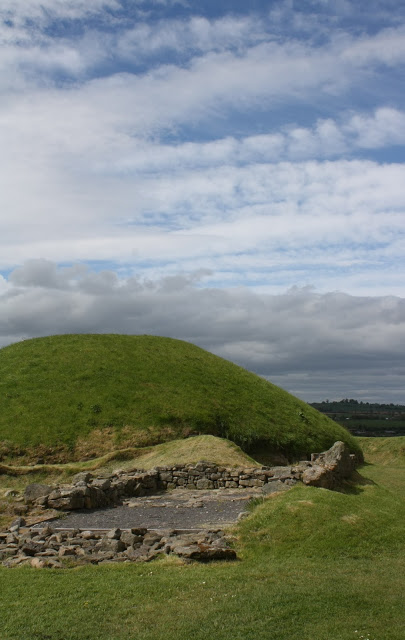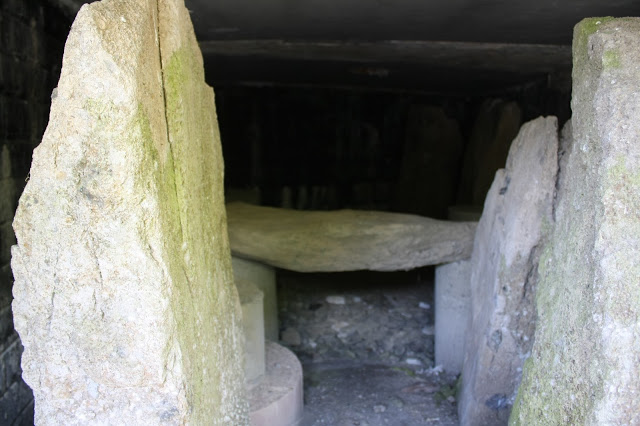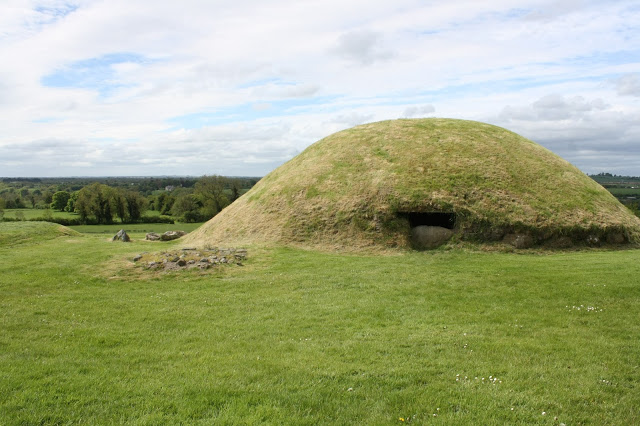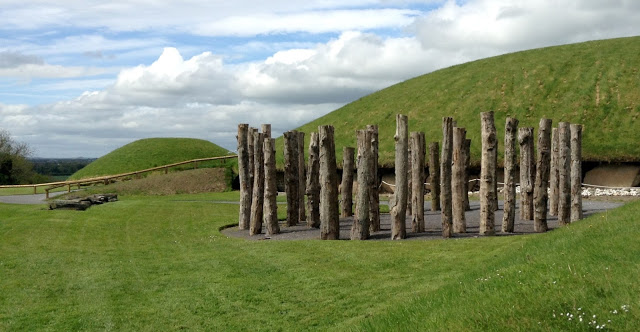
At the end of May, Josh and I took an eight day trip to Ireland. We emerged, windswept and damp, with over 5,000 photographs, which I have since whittled down to more reasonable, post-sized selections.
The art and history of Ireland are outside my particular expertise, so the information included in these posts has been culled from guidebooks (DK and Lonely Planet), related websites, our many lovely guides, and a variety of materials provided at the sites themselves.

Our first day outside of Dublin began at Brú na Bóinne, one of the island’s three UNESCO World Heritage Sites. The valley of Brú na Bóinne contains three Neolithic centers—Knowth, Newgrange, and Dowth—each of which possesses a great mound (large passage tomb) and smaller satellite graves. Only Knowth and Newgrange are open to visitors, and these are only accessible through tours provided by the visitor center. Such stringent oversight is unusual in Ireland, but it allows for better preservation of these important, fragile monuments.


Knowth is the first stop for those who choose to visit both open sites. Of the three centers, Knowth is the oldest, was utilized for the longest period of time (up to about 1400), and is arguably the most complex.
Knowth’s great mound possesses two entrances (referred to as the “male”/western and “female”/eastern chambers due to their relative shapes), but visitors can only go into a contemporary passage and small exhibition space near the less impressive western passage. Chunks of white quartz and dark, rounded granite are scattered on the ground around both entrances of Knowth, while the same kinds of stones have been reconstructed into supporting walls at Newgrange. This discrepancy is probably more reflective of changes in archaeological practices and philosophy towards reconstruction than a difference in original use and placement at the two mounds.



More importantly, Knowth boasts the largest collection of Megalithic art in Europe, most of which is still in-situ. A good sampling can be found on the slabs, or kerbstones, around the base of the central mound, although much of what exists is located in the primary but inaccessible “female” chamber.

Knowth also differs from Newgrange in that the site includes a number of smaller satellite passage tombs clustered closely around the central mound.



Although all passage graves contain cremated human remains, it is likely that the great tombs also had additional, ritualistic functions, as suggested by the fact that their passages were tall enough for people to walk through, and each was lit at either a solstice or equinox.
Knowth and Newgrange were also once sites of woodhenges (reconstructed at Knowth), which post-date the mounds by several centuries. Like the large passages, these henges were arranged to correspond to significant dates in the year’s cycle.

At both sites, archaeological reconstruction was aided by kerbstones which ring the bottom of most passage tombs; similar large stones line the interior passageways of the primary mounds. Abstract imagery—particularly spirals, circles, and undulating lines—has been engraved into the surfaces of over a hundred of the boulders. It is unclear what, if anything, these “symbols” represent, although they may depict aspects of the landscape, particularly the sun, rivers, hills, and even the mounds themselves.




All photos by Renée DeVoe Mertz, May 24, 2013, unless otherwise noted.













